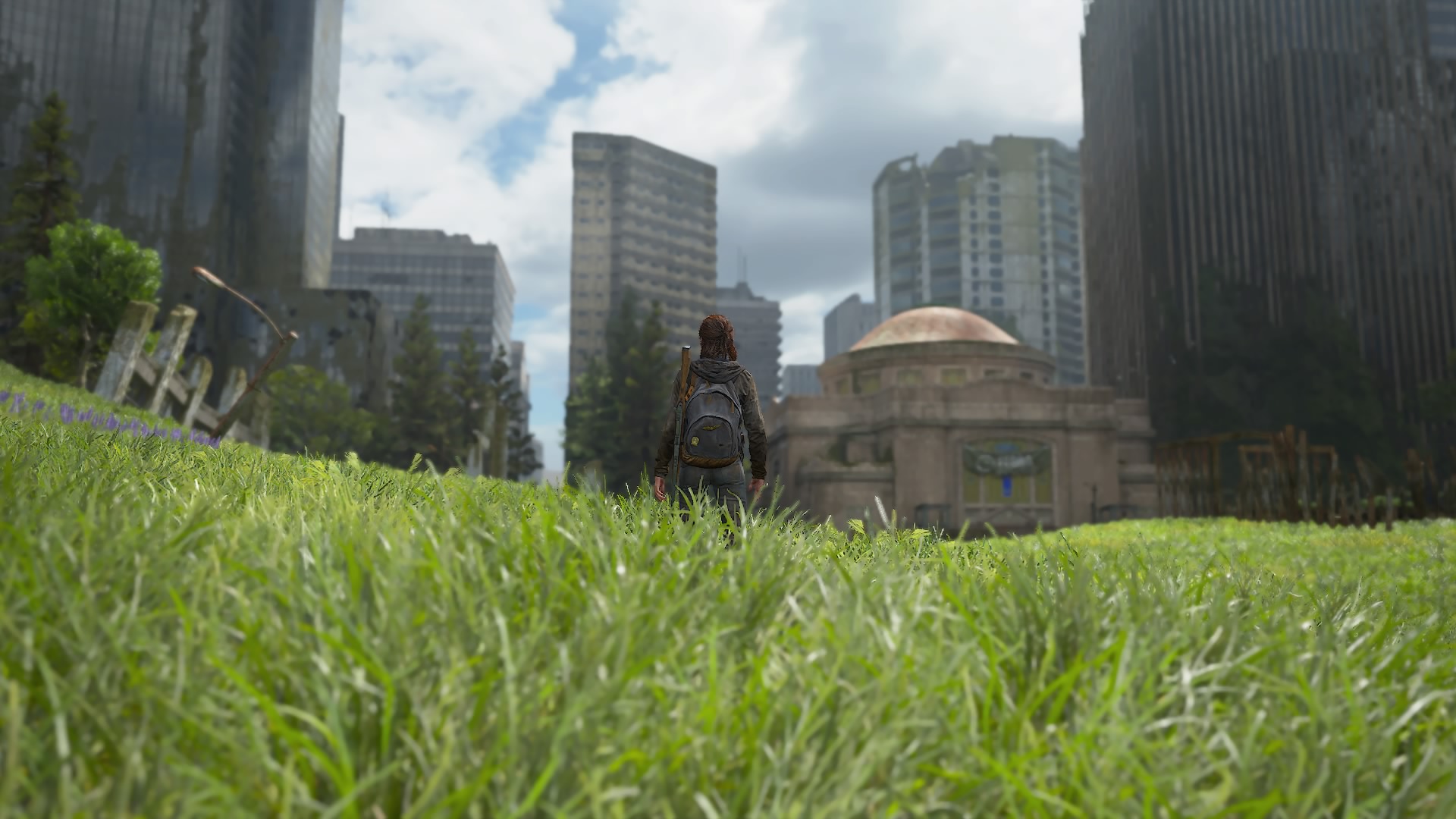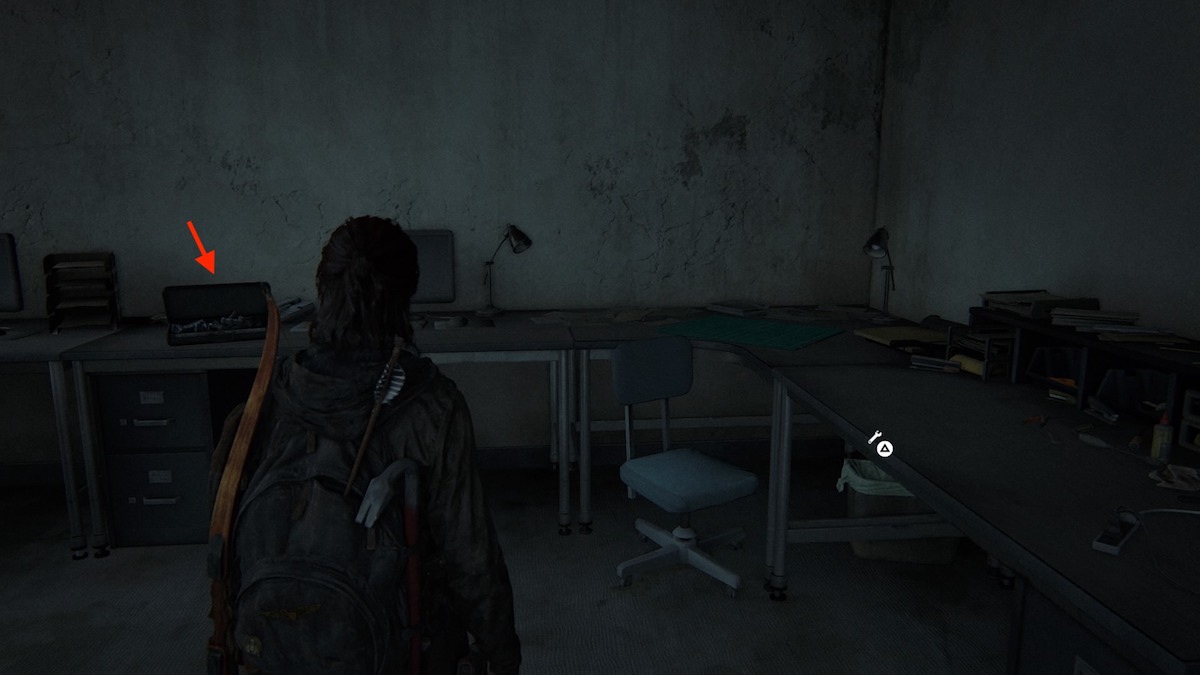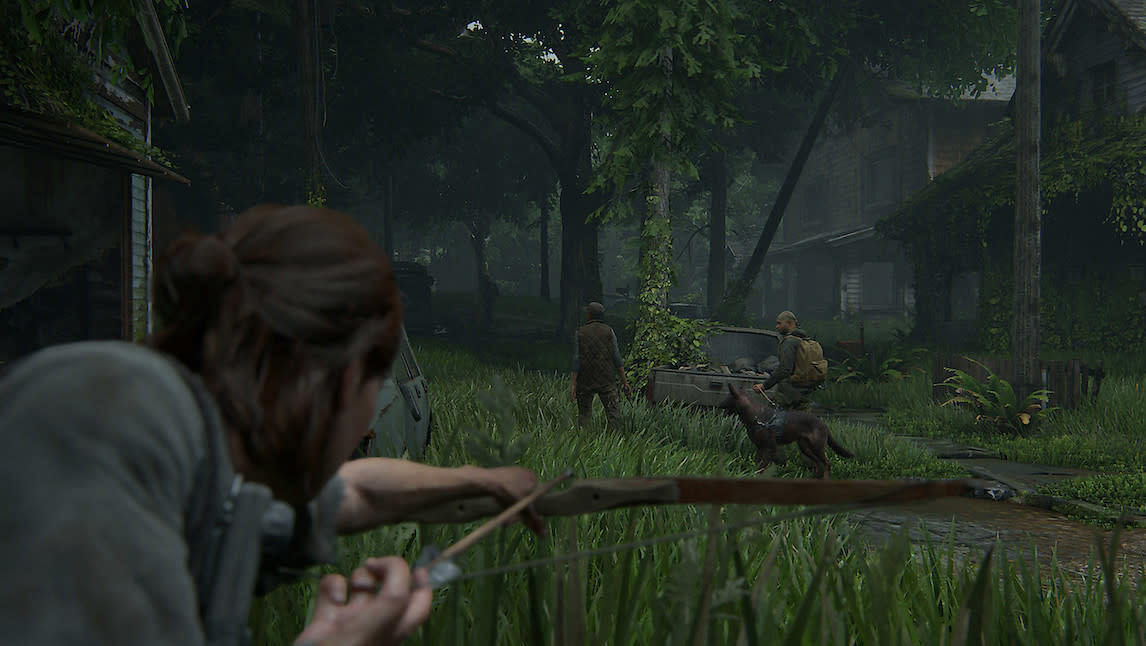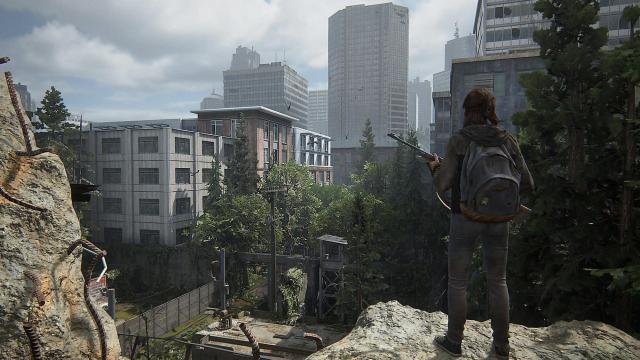It’s been seven years and an entire console generation, but we finally have another Last of Us game. Out today for PlayStation 4, The Last of Us Part 2 plays much like the first game: tight, third-person action set in open-ended levels with a heavy focus on stealth. Much like the first game, it’s no cakewalk. These tips will help you survive and thrive in a fungus-infested America.
Brush up on the first game’s plot.
As its name implies, The Last of Us Part 2 is very much a second part. You could play this game knowing nothing of the first and still have a fine time, but narratively, you’ll be lost. It’s best enjoyed if you have at least a moderate understanding of the first one’s main characters and important moments. Luckily, for those who missed it ” or haven’t played in seven years ” we’ve got you covered:
[referenced url=”https://www.kotaku.com.au/2020/06/a-beginners-guide-to-the-last-of-us/” thumb=”https://www.gizmodo.com.au/wp-content/uploads/sites/3/2020/06/18/frguipnnb3v3iuzgm46f-300×169.jpg” title=”A Beginner’s Guide To The Last Of Us” excerpt=”Seven years ago, to the week, Naughty Dog released the third-person, survival-action game The Last of Us. It floored fans and critics and sold 20 million copies across two editions, cementing a position in the pantheon of great video games. Now the sequel is upon us: Naughty Dog will release…”]
Play around with the difficulty sliders.
The difficulty settings in The Last of Us Part 2 are impressively robust. By adjusting the “challenge” slider, you can change the difficulty wholesale, ranging from Very Light (easiest) to Survivor (hardest). But you can also tweak various difficulty settings piecemeal.
For instance, you can fine-tune enemy aggression, accuracy, and movement speed. You can change how effective your allies are. You can decide how frequently ” or infrequently ” resources drop. You can even modify how much damage you dish out and receive. Mix and match until you find a setting that works for you. (Note: You can only fine-tune these sliders from the in-game menu, rather than the main menu.)
Check out the accessibility options.
Beyond difficulty sliders, there are more than five dozen various accessibility settings, many of which switch things up in major ways.
You can toggle pretty much every input in the game from “tap” to “hold.” You can switch the boat controls (a small yet necessary part of world traversal) to operate more like a traditional racing game. You can make it impossible to fall off fatal ledges. You can tweak camera shake and motion blur within 10-point intervals. You can widen the field of view, and even pull the camera further back from Ellie (a huge help in mitigating motion sickness).
You can also fine-tune specific aspects of combat. You can make it so you’re invisible while prone (as long as you’re not lining up shots). You can minimise weapon sway, make it so enemies won’t flank you, widen the dodge window, and even put combat into a semi state of slow motion.
Save often, and don’t trust the autosave.
The Last of Us Part 2 has a relatively forgiving autosave system. Sometimes, it’s a bit too forgiving and will drop a checkpoint in the middle of an encounter ” right when your ammo and health are on the fritz. This is no small inconvenience: Yes, you’re technically further along than you were at the start of the fight, but you won’t have the resources required to get out of a serious bind. If anything, the autosave frequency is a hindrance.
Thankfully, the fix is easy. When you’re approaching a space that looks like it’ll have a fight, create a manual save. Storage space permitting, there are no limits to how many manual saves you can create.
Explore every nook and cranny.
Leave no stone unturned. Open every cabinet, bed stand, and dresser. To survive in The Last of Us Part 2, you’ll need every resource you can get your hands on.
In particular, check out every building in Seattle.

In one of the early chapters, you’ll wind up in a large swath of downtown Seattle (or, uh, what’s left of it). You’re given a horse and a map ” one that players of Uncharted: Lost Legacy will surely recognise ” and sent on your way. Your goal is simple: Find gas for a generator. (Classic Last of Us, am I right?)
As you explore, you’ll find contextual clues and documents that hint at various treasure troves throughout Seattle. Ellie will circle a location on the map for every clue you discover. If you check out each of those locations before progressing the story, you’ll find a ton of parts, pills, and craftable resources. You’ll also find a secondary sidearm holster. Once that’s unlocked, you’ll be able to switch through two small weapons at the press of a button. It’s an essential upgrade, and is invaluable for early-game encounters. You don’t want to miss it.
For a deeper look at the remnants of downtown Seattle, and the ideal order for tackling these optional locations, check out the following video walkthrough. (And please indulge me by marveling at the headshot at 5:50.)
Don’t miss a single safe.
Seattle is littered with hidden safes, all of which require a puzzle of some sort to open up. Don’t ignore any of them: Each safe holds a genuine bounty. Expect to score at least 15 to 20 pills or parts, a respectable amount of rare ammo, and other goodies.
If you see a safe, there’s probably a code nearby. If you see a code or find a note about a safe (or a “cache,” “stash,” “Henry Avery’s long-lost treasure,” what have you), there’s probably a safe nearby. Whatever the case, look around before moving on. More often than not, if you approach a door that requires you to hold down Triangle, that’ll trigger a brief cutscene. Sometimes, you won’t be able to backtrack. Be sure to exhaust all efforts in finding the safe and the code before you cross the threshold.
Use your pills on these skills.
When you start out, Ellie only has one skill tree. As you play, you’ll find training manuals that open up the other four. You won’t be able to unlock all the skills in the game in one playthrough, though, so make sure you choose wisely.
I suggest nabbing the first upgrade in the Crafting tree as soon as you can. This will allow you to augment melee weapons, restoring durability to full and doubling attack power. Once you get that, focus solely on the Survival, Stealth, and Explosives trees.
The Explosives tree will unlock explosive arrows (which can take out clickers in one hit) and significantly boost the blast radius of both your molotovs and your trip mines. The Stealth tree will initially teach you how to craft silencers for your pistol. Continuing to pour pills into it will sharpen your sight in listen mode ” to the point where you can see through walls ” and make it so that your crawl speed is just as fast as your crouch speed. For stealthy encounters, few perks are more helpful.
But nothing is more essential than the Survival tree. Fully levelling up Survival will double your speed in listen mode, double the speed at which you apply health kits, increase your health by 25 per cent, and give you a life-saving perk that prevents you from dying in the event of a lethal blow (clickers and bloaters excepted).
Ignore the Precision tree. Though the penultimate ability (holding your breath to stabilise aim) is terrific, it’s not worth wasting pills on the lower-level perks. You can get most of them through weapon upgrades, anyway.
Use your parts on these weapon upgrades.
As with skills, you won’t be able to unlock all of the weapon upgrades in one playthrough. Choose wisely. In general, capacity upgrades aren’t worth it. You’ll rarely, if ever, have enough ammo to fill up an entire clip. Why waste valuable currency on something you won’t even be able to use? That’s unethical capitalism even when you’re not in an apocalypse.
Stability upgrades can be helpful, particularly if you don’t unlock any of the skills in the Precision tree. Levelling up the bow’s draw speed is also helpful. That will turn the thing into a viable combat weapon, rather than a tool purely meant for stealth. But the best upgrade in the game is the bolt-action rifle’s damage boost. Nab that one, and you won’t need to land a headshot to take out standard enemies in one hit. (Go figure that it’s the most costly upgrade in the game.)

Most workbenches will have a cache of parts ” generally at least a dozen ” in close proximity. Search around for a minute before you start upgrading your firearms. That way, you’ll have maximum funds at your disposal to get what you need.
Don’t immediately improve your melee weapons.
Each melee weapon has a set number of uses. Land five hits with a crowbar, for instance, and it’ll break. But upgrading it will restore any missing durability and make it more powerful. (An upgraded melee can take out standard enemies in one hit, rather than two.) You’ll get the most bang for your buck by waiting until there’s just one use left before upgrading.
P.s., A melee weapon can shatter glass ” windows, cooler doors, pastry cases, that sort of thing ” without wasting a precious use.
Craft to make room for more resources.
There are six resources in The Last of Us Part 2: alcohol, binding (tape), blades, canisters, explosives, and rags. You can only hold three total for each one. While exploring, if you’re full up on one resource and come across some more, craft something to free up room in your inventory.
Tape is more precious than gold.
In The Last of Us Part 2, nothing is more valuable than tape (“binding,” if you must use the game’s parlance). With tape and some blades, you can upgrade a melee weapon. That same combination also crafts more arrows, which can take out standard enemies in one hit. Pair tape with explosives, and you’ll get explosive arrows. Those need no explanation.
It’s not that tape is the most versatile ingredient. (Canisters, rags, and explosives are also requisites for three recipes each.) It’s that tape is always, always in short supply. Whenever you need to craft some arrows, too bad, you’ll be out of tape. The number of times you’ll open a dusty drawer, hoping for ” begging for ” tape, just to find yet another pile of rags!
Molotovs won’t instantly give away your position.
Some stealth tools are obvious: A silenced pistol, for instance, or the bow-and-arrow. One secret stealth weapon? The molotov. You can take out most enemies in one hit without revealing your location. Human enemies will say something along the lines of “It came from over there,” and head over to check things out, but your exact location won’t be revealed. Just crawl away to a different corner.
Use guns as a last resort.
At moderate difficulty, ammo is scarce in Part 2. Whenever possible, try to take out enemies without firing a single bullet. Toss a molotov. Use a melee weapon. Sneak up behind foes for one-hit stealth kills. Try your luck in a fist fight. (Bonus tip: Spam L1 to dodge 90 per cent of melee attacks.)
On the flipside, if the game starts feeding you a ton of ammo, you can bet your tape stash that a big fight is coming up. In the ensuing wide-open arenas, don’t worry as much about conserving ammo. Once the area is cleared, you’ll be able to recoup all of your expenses, so long as you search every drawer before moving on.
By the way, there’s an easy tell for when a battleground is cleared of enemies. Rather than an obvious musical cue, one of the characters will generally remark on what they just went through: “Was that all of them?” “I think we got “˜em all,” or, sometimes, possibly echoing what you’re thinking, “Fuck.”
Stealth is an art, not a science.

Plenty of games developers throw around words like “dynamic stealth” in marketing materials. The stealth in The Last of Us Part 2 is truly dynamic. There’s no awareness metre. Enemies don’t have helpful yellow-to-orange-to-red arrows hovering over their heads. Even after playing through this game one-and-a-half times, I can’t say for sure what causes an enemy to spot you, or what constitutes viable cover. Stealth in this game is really all about feeling. You’ll just have to go with your gut.
There’s no shame in running away.
In combat, you’ll inevitably get overwhelmed from time to time. When that happens, turn tail and retreat as fast as you can. You won’t be able to leave an encounter, but you will be able to run away from your enemies. If you hold down Circle while running, you’ll dive into a prone position. One easy retreat strategy? Sprint and dive into tall grass. Depending on how removed you are from an enemy’s line of sight, they’ll “lose” you, at which point you can reassess and re-engage.
Don’t try to run toward enemies.
Rushing an enemy might seem like a good idea. Most melee weapons are instant kills, and you’ll conserve ammo, too. But anyone wielding a gun will suddenly turn into Hawkeye: all of their shots are guaranteed hits. You can keep sprinting at them all you want, but they’ll keep landing shots.
Similarly, if you sprint head-on toward a clicker, you’re in for a world of hurt. Even with expertly timed dodges, you won’t be able to deal any damage. They’ll counter any attacks from the front with a one-hit kill. Immolate them with molotovs, blast away with the pump shotgun, or land two headshots with a more precise weapon. Or, if you can sneak up behind them, take them out in one hit with Ellie’s knife. But be warned: The ensuing screech might wake up any nearby “sleeping” clickers.
Take breaks.
Terrific as it is, The Last of Us 2 is a seriously grim game. You don’t want to mainline this one. I won’t suggest exact hour counts, but at least walk away whenever the screen fades to black after a dramatic cutscene. Go pet a kitten, or eat a cupcake, or smell some flowers, or do anything else. Then return to Part 2 the next day. It’s not going anywhere.
More things to click(er) on:
[referenced url=”https://www.kotaku.com.au/2020/06/the-last-of-us-part-2-the-kotaku-review/” thumb=”https://www.gizmodo.com.au/wp-content/uploads/sites/3/2020/06/19/lfeckrigcfmwaizfhrum-300×169.jpg” title=”The Last Of Us Part 2: The Kotaku Review” excerpt=”Everything in The Last of Us 2 takes work. Every weapon reload, killing blow, and crafted item takes time and button presses. At times the game is painfully slow; even in the most action-packed sections you put in effort to move things forward. You’re paid for this work in a…”]
[referenced url=”https://www.kotaku.com.au/2020/06/heres-the-deal-with-the-last-of-us-part-2/” thumb=”https://www.gizmodo.com.au/wp-content/uploads/sites/3/2020/06/19/uxsbyvhf4erehwihvgdi-300×169.jpg” title=”Here’s The Deal With The Last Of Us Part 2″ excerpt=”The road to launch for The Last of Us: Part 2, out tomorrow for PlayStation 4, has been lined with questions. The leaks in April were one thing. The review conditions provided by Sony were another. We adhered to those guidelines, and signalled that to readers in our review. Of…”]

Comments